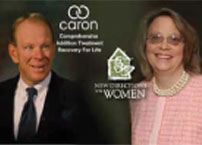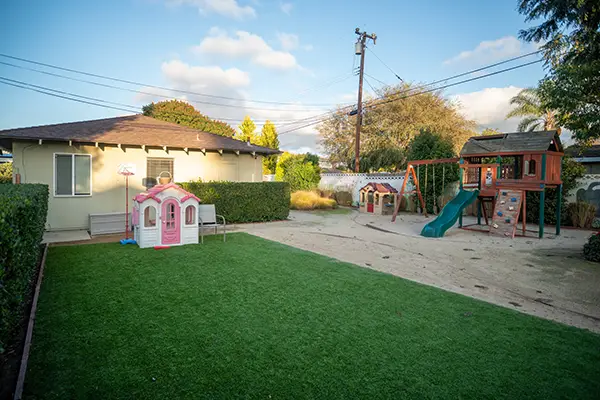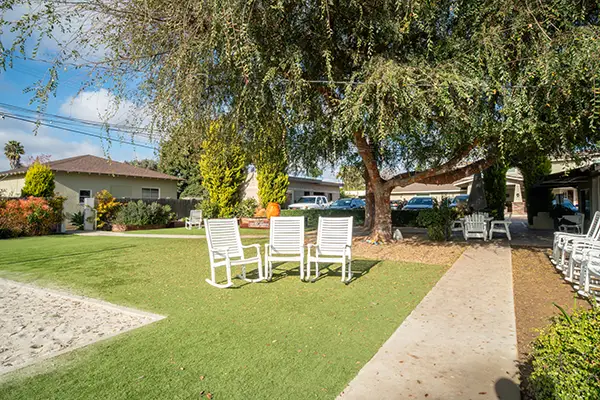
In an economic downturn, with declines in gross domestic product, high unemployment rates and dismal stock market performance, administrators at non-profit behavioral healthcare facilities may have concerns about how charitable giving to their foundations may be impacted this year. However, you may be surprised to find that according to the Center for Philanthropy at Indiana University, when the economy slows down, history has shown that giving continues to grow but at a slower rate. In their Giving USA report in 2008, the Center for Philanthropy reported that the average rate of change during an economic recession is a 1-percent drop. Their experts say facilities that rely on fundraising can weather the downturn when they have a solid program that offers “a compelling case for support.”
How can this be accomplished? BHC Journal turned to two very successful treatment facility CEOs, who are renowned in the industry for turning struggling facilities into solid, strong operations. To listen to our inspiring interview with Doug Tieman of Caron Treatment Centers and Rebecca Flood of New Directions for Women, click on the media player above. Or, read their words of advice below.
BHC Journal: This is Robin Jay with BHC Journal. Today we-re speaking with two widely recognized experts in the behavioral healthcare industry to discuss fundraising strategies in this tight economy. They represent both large and small organizations, so their ideas and solutions can very well be effective for your type of facility.
Let me introduce you to our panelists. Our first panelist is Rebecca Flood. Becky is CEO and Executive Director of New Directions for Women in Costa Mesa, California. She-s also CEO of Morningside Recovery, a 60-bed facility in Newport Beach. Becky has 30 years of experience in the healthcare industry. She is also the President of the Association of Intervention Specialists, co-founder of the National Interventionist Credentialing Board and a board member of the National Association of Addiction Treatment Providers.
Our second panelist is Mr. Doug Tieman, President and CEO of Caron Treatment Centers. Mr. Tieman has spent more than 20 years in the addiction treatment field in treatment center and industry leadership positions. He-s been the President and CEO of Caron since 1995 and under Mr. Tieman-s direction, Caron has taken leadership roles in treating addiction in young adults and adolescents, sponsoring prevention and research, and participating in national conferences on addiction and recovery. He has also established regional centers in Philadelphia, New York, Boca Raton, Florida, and Bermuda. Since Mr. Tieman joined Caron, revenues have more than quadrupled.
Panelists, thanks for joining me today.
Becky Flood: Thank you Robin.
Doug Tieman: Glad to be here.
BHC Journal: Our first question in relation to facility fundraising is: What challenges is your size facility facing in regard to fundraising in these tough economic times? Becky we-ll start with you.
BF: We are launching a $13 million capital campaign this year in the midst of very difficult financial times, and what we have found is that we-re going to have to go much broader and include more individuals than we would have ever originally anticipated for a project of this size during these economic times.
BHC Journal: What kind of outreach do you usually have (as far as quantity of touches) and what types of quantities are you going to have to reach out to now?
BF: Well, we do have a core group of individuals who are extraordinary philanthropists in our community and have been committed to the organization over its last 33 years. In addition to that, they in turn are now reaching out to a wider group of their associates and friends and colleagues in order to ensure the success of the campaign.
BHC Journal: I see. And Doug?
DT: Caron Treatment Centers has a large and well-established fundraising history and I believe that the current economic situation is affecting us like it is any other organization that is heavily involved in fundraising. The first piece of importance goes to the psychological impact that it has on the individual donor. We really rely on major gifts, and major gifts are typically made out of an emotional attachment and connection to an organization. So during the environment that we have been experiencing now for the last year, it just makes people feel like they have a lot less (and many people do have a whole lot less) and we have seen terrible news reports about people losing a significant amount of their financial wealth, many of them people who had been philanthropists, and so they have less money to give.
And even people who maybe don-t have that type of financial duress still psychologically feel a whole lot poorer than they did one year ago, and that has a significant impact on anybody involved in philanthropy. I think there are two other factors that impact the behavioral healthcare field. One is that as those individuals that are relied upon for philanthropy in their particular community are really going to the basics, whether it-s their religious beliefs, their churches, education, their hospital. We-ve got to support those really basic charities. So with that happening, unfortunately behavioral healthcare is typically toward the end of a line for many of those and I think that has an impact on anybody in our field, as well.
BHC Journal: And with that in mind, how does your messaging change? How do you reach out in a different way with a different message that may help you move up that ranking and in your positioning of where folks send their philanthropic dollars? Doug?
DT: We actually are trying to use this as an advantage. We talked to our supporters, our alumnae and they truly understand that. They said for the average person, supporting this cause is down on the list second, third, fourth, whatever it might be behind their hospital, their church, United Way and Red Cross. We really try to use that as a strength for our alumnae and say, If not us, then whom? We have seen first-hand how addiction recovery impacts our particular families, so we now need to step up and make this our priority. And so with our alumnae, our Board, our employees, we have really used that in a positive way.
BHC Journal: Thanks Doug. Becky, in your industry experience, you-ve been known for going to facilities that may be struggling and really gearing them up and fine-tuning them to get back into the black. With these economic times coming, what factors do you think are important when messaging to the donors and contributors?
BF: I think one of the uniquenesses about New Directions is that we are singularly focused on women, pregnant women and women with children. So I think really [it’s about] defining your vision in your mission and being very clear about who you are and if you have a uniqueness so that you can reach out to a broader range of individuals or foundations or family trusts that are really focused on the same vision and missions that you clearly have. Especially during difficult times, I think knowing who you are and who supports those types of efforts is critical to your success.
Like Doug said, I do believe people go to the basics and the necessities. At the same time, if you clearly know who you are and what your target is, you can then bring in people beyond just the families and alumnae, but also the wider community that supports the endeavors, such as children and education. You really need to wrap your arms around and be clear about who you are.
BHC Journal: Thanks Becky. Let-s talk a little bit about the fundamentals of what makes up a solid fundraising foundation for organizations who may be newer or who may not have a lot of experience with fundraising. What are the core fundamental basics that they should have in place in order to achieve a successful fundraising campaign? Doug?
DT: I think a number of factors. First thing I always talk about is making sure you understand that the grass is greener on your side of the fence. Often times organizations will, you know, when they get started, will look around at organizations around them and say, Wow! It will be easier to raise money if you had whatever characteristics they have. So I really have always started with, We really need to look at what makes this unique; what makes this special; how is the world not a good a place if this organization isn-t around?
So the first thing is the organization really needs to articulate those special qualities that help it to better humanity and that really forms a basis for your case for support. Why should people want to give to this? What are the compelling reasons that make this an exciting philanthropy to be involved with? Once you have that, there are some other really important ingredients. Your board of directors needs to clearly be committed to philanthropy. They all need to participate at a meaningful level for whatever that might be for them. Some people interpret it to say you have to have a wealthy board, but you don-t necessarily need to have a wealthy Board. It-s nice to have some wealthy people on your Board, but everybody needs to be committed at whatever level they are.
I also believe that it-s really important for the executive team to be led by the president and all the executives to firmly understand that philanthropy-s an important role within the community. We-re very, very open about that at Caron Treatment Centers. When you walk into our building, we have plaques, we have messages. When you walk into our organization, any building you go into, it-s clear that this is a non-profit organization. It-s clear that the beautiful buildings and programs we have here have been made possible because people before have committed to this. And hopefully the message resonates with those who may be here today that they need to sustain this legacy.
And then I think there-s another factor that also kind of starts from within, as we are very proactive in embracing our employees to give annually. We have a very aggressive employee campaign that reaches nearly 100 percent of our employees participating, and this year our employees gave just short of $200,000 to our employee campaign during this environment and that resonates with our alumnae and our patients about, Wow, these people really believe in this. You put that whole package together and it makes it a whole lot easier to reach out to your community, your alumnae and others that you hope will embrace your mission.
BHC Journal: Thanks Doug. And Becky, for your size facilities, what recommendations do you have?
BF: I think some of the same factors that Doug just talked about. I think there are tried-and-true fundraising principles, and I think that we know that 90 percent of gifts come from individuals, whether it-s coming from the board, the staff, or the community at large. Our greatest effort is spent in individual donorship. Beyond that, it comes from family trusts and foundations and organizations and event giving and those kinds of things.
So we employ a model that-s called Raising More Money, which is really, truly wrapped around individual donorship and building up individuals, our commitment to them and their commitment to us. So I think ours is on a much smaller scale being a much smaller facility and organization, but it-s still tied to the basic fundamental principles of fundraising.
I think that during these difficult economic times those same principles have to be adhered to, but we have to embrace a much wider range of individuals and accepting smaller-level gifts than we have in the past. I think if we kind of all embrace the concept of this last major presidential campaign and how so many more people were reached via the internet and via different avenues than have been used in the past, and every dollar matters. Every single dollar was talked about and appreciated, and I think during these times, we just have to reach more individuals and appreciate whatever it is that they are able to bring to the table.
BHC Journal: Thank you Becky. You bring up a good point – that with regard to 15 years ago, much of the requests may have been over the phone or in direct mail with an invitation or maybe event-driven. Are you guys employing more of the electronic strategies that are available with online communications today?
BF: We are very much so. Through electronic newsletters, email blasts, our Website allowing for people to make donations directly online. So we are employing a lot more electronic use in order to reach a much broader and larger audience than we ever have in the past, while still doing some of the regular hard-paper, event-driven aspects. We still have some of those things in place, but they are minimal in comparison to what we are doing to reach a wider audience.
BHC Journal: I see. Doug, would you like to comment on that?
DT: Well, I think the internet clearly makes it much easier for real-time communication with a broader group and having opportunities for people to make contributions online, having opportunities for people to sign up for special events online, having opportunities for you to share real-time information certainly is advantageous and needs to be employed and we do those things. The biggest challenge I think we sometimes have with the use of the internet is not relying on it so heavily that we lose the face-to-face contact. Any healthcare, and maybe even addiction recovery healthcare even more so, is really a face-to-face, eyeball-to-eyeball exchange. So when it comes to whatever you classify your major gifts donors as being, you just can-t lose the ability to be in front of people and sometimes you begin having people wanting to rely so heavily on email that you just don-t talk to them as much as you should, which means you lose the personal anecdote, the personal give-and-take, and that-s needed to be able to have the opportunity to get together in person so you can develop that relationship to a deeper level.
So we really try to make sure that we-re using e-communication as that really is an opportunity for grassroots folks to make gifts, but when it comes to major gifts, we just don-t want that in any way to get in the way of our having an opportunity to develop a relationship, because relationships are what matters when it comes to major gift giving.
BHC Journal: It really helps to build that face-to-face relationship and so it-s just not a communication that has no one-on-one value. Good point, Doug, thank you. And another question I wanted to follow-up with is this: With this new administration in place and possible pending tax codes for non-profits, are there any concerns or issues that you think facilities should keep an eye on with regard to how increasing fundraising could impact their tax liabilities or other issues related to that? Becky?
BF: I do believe that the tax implications for individuals or families that are in the bracket of making more than $250,000 may have a negative impact on those that do give because their charitable contributions are not as tax-deductible as they once were in certain categories. I think that people as Doug talked earlier today I think people are thinking longer and harder about what they have to give, where they need to give it. I really am hopeful that some of the tax changes are looked at, because what happens is non-profits then are hindered from getting donations and people then become more reliant on social service systems to take care of some of the behavioral health needs that they could receive from a non-profit if donors were more willing and able to give.
BHC Journal: Excellent point. Thank you for that, Becky. Let me follow-up and ask both of you: Is there anything that I haven’t asked that you think is an important issue for facilities to know with regard to fundraising? Doug?
DT: First, I would just like to make a comment on the last question that you asked. Becky, she did a great job in sharing how I believe most non-profits feel about this [potential tax impact] and I would say that at Caron we-re deeply disturbed by the proposed legislation, which would certainly reduce the amount of deductions for people in the highest tax category. Earlier I had mentioned people make major gift decisions typically based on an emotional reason, but we also know that the size of that major gift is deeply impacted by financial constraints.
The tax considerations are certainly one of those, and when you look at the folks that make the largest gifts toward organizations, they do certainly factor in what the tax implications are. And for an individual to lose that will have a significant impact on major gift fundraising. That means facilities like all of ours in the non-profit world that rely on this will have less finances, at a time when there is an increased demand for social services. So we-re deeply concerned about it and I-m delighted that the hospital associations and AFP and a lot of other organizations are aggressively working to make sure that this does not get passed.
If you-re looking for final comment, I would just say that now more than ever is a great time to be involved with philanthropy because the need is significant. We know that there-s increased use of people self-medicating during times like this. Unfortunately, there is also at the same time less funding available, and that equation can still be balanced by philanthropy. So it-s a great time to be able to make a case for this. I would just caution that you can-t do it out of panic. I-ve seen organizations do that and donors do not appreciate giving to organizations that they have a concern that they may not be here tomorrow. So you need to really demonstrate a great deal of stability and that you-re going to make it through this and that you have strong leadership and you have a strong financial plan.
But increased philanthropy can make it a more effective way to help people during challenging times like this. And I also think it provides an impetus to just work harder. You just have to do more to get the same results. A stockbroker gave me a great analysis of this about six months ago. He made the comment that between the time of 2002 and 2007, he never worked so little to make so much, and then in the past year, he had never worked so hard to make so little. So there is an analysis to that that we just have to really work much harder philanthropically during time like this without having a sense of panic, because that will frighten our donors.
BHC Journal: Doug, thank you for those comments. I-m sure that our listeners, our administrators and C-levels who are listening to this and wondering what in the world they-re going to do to stick this out, will find those words very helpful, thank you. Becky, anything to add in closing?
BF: Very quickly, I would just say that I agree with what Doug has said and said so eloquently. In any difficult time, you can turn it into an opportunity. I think that the opportunity is that we-re going to reach out to the multitudes instead of a narrow focus of individuals. I believe it-s going to strengthen our nation and give us an opportunity to have a lot more philanthropists even though some of them maybe smaller givers. They will be giving from the heart and giving out of need, and I think that this whole nation is in a change event in which we are all reaching out to each other in ways we have never done so before. so I see that as a tremendous opportunity for each and every one of us to engage with each other and to help each other during these times and that would be, I think, the greatest gift that we could get out of these difficult times.
BHC Journal: Thank you Becky. Panelists, I want to thank you both for taking your time and offering information based on your strong leadership skills. I-m confident your advice will be encouraging words to our group of facility leaders who are listening to this. Thank you again.
BF: Thank you, Robin. Thank you, Doug.
Reprinted with permission of BHCJournal.com



